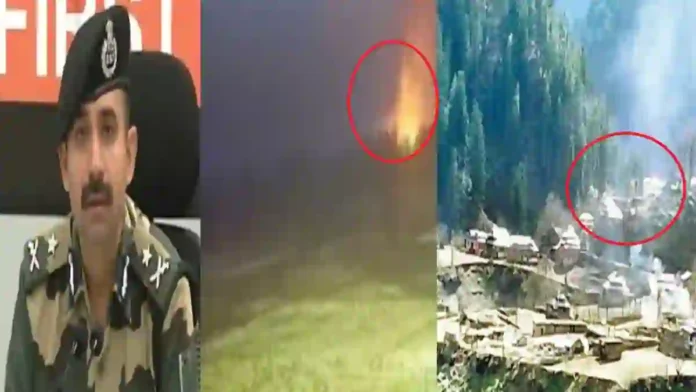In a significant escalation along the International Border (IB) in the Jammu frontier, the Border Security Force (BSF) on Tuesday reported a robust retaliatory operation in response to unprovoked firing and shelling by Pakistani Rangers.
According to official sources, the BSF launched a coordinated counter-offensive, code-named Operation Sindoor, targeting 76 Pakistani border outposts and 42 forward defence locations (FDLs). The operation was meticulously planned and executed, resulting in the destruction of three terrorist launch pads believed to be used for infiltration attempts into Indian territory.
Operation Sindoor marked a significant and forceful response by the Border Security Force (BSF) to unprovoked firing and shelling initiated by Pakistani Rangers along the International Border (IB) in the Jammu frontier.
The operation was launched in the aftermath of the April 22 Pahalgam terror attack, which heightened tensions and led to increased vigilance and deployment of Indian security forces across sensitive regions, including Rajouri, Poonch, Jammu, Samba, and Kathua.
Read- ‘We want to resolve all disputes’: Pakistan PM Shehbaz Sharif says on Kashmir, water issue
Read- “Sukh chain ki zindagi jiyo, roti khao, warna meri goli to hai hi”: PM Modi’s message to Pakistanis
In the days following the Pahalgam attack, Pakistani forces escalated hostilities by targeting 60 Indian border outposts and 49 forward defence locations, reportedly to provide cover for an attempted infiltration by 40–50 terrorists.
The BSF responded decisively, targeting 76 Pakistani border outposts and 42 forward defence locations, and successfully destroyed three key terrorist launch pads in a series of precision strikes. These launch pads, including those in Loni, Mastpur, and Chabbra, were linked to major terror outfits such as Lashkar-e-Taiba and were situated just a few kilometres from the Line of Control (LoC).
The operation was characterized by its high degree of planning and coordination, involving intelligence-led targeting of enemy infrastructure. Surveillance systems detected significant terrorist movement near Sialkot, prompting pre-emptive strikes that foiled infiltration attempts.
The BSF’s counter-offensive also targeted and destroyed Pakistani bunkers, surveillance equipment, and communication towers, inflicting substantial damage on the adversary’s military and terror infrastructure.
The BSF faced modern threats, including the use of low-flying drones by Pakistani forces to drop payloads on Indian positions. One such attack resulted in the martyrdom of two BSF personnel and one Army Jawan.
In response, the BSF intensified its operations, further degrading enemy capabilities and maintaining aggressive field domination along the border.
Read- ‘Fund Kaveri Engine’ Trending Across India: India Weighs Options For Next-Gen Fighter Jets
Women personnel of the BSF played a notable role during the operation, with several choosing to remain at forward posts and actively engaging in combat.
Their bravery was publicly acknowledged, and the BSF leadership proposed naming posts after the martyrs and in recognition of the operation’s success, with one post in Samba to be called ‘Sindoor’.
Operation Sindoor not only disrupted ongoing infiltration attempts but also sent a strong message regarding India’s resolve to defend its borders and respond robustly to cross-border terrorism.
The BSF’s actions led to the destruction of terrorist infrastructure, significant casualties among terrorists and Pakistani Rangers, and the temporary evacuation of several Pakistani villages by Rangers.
The operation concluded with an understanding to halt firing, but the BSF remains on high alert, anticipating future attempts to restore terror infrastructure across the border.
Operation Sindoor stands as a testament to the BSF’s operational preparedness, technological integration, and unwavering commitment to national security, civilian protection, and the legacy of valour demonstrated by its personnel.
Based On A PTI Report
Agencies




